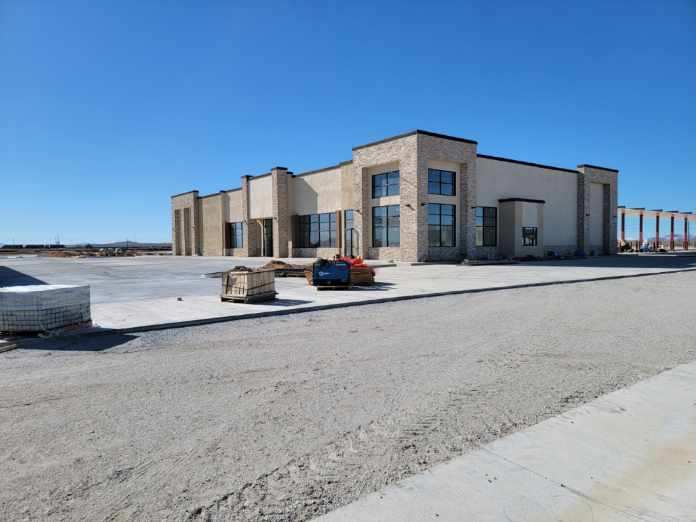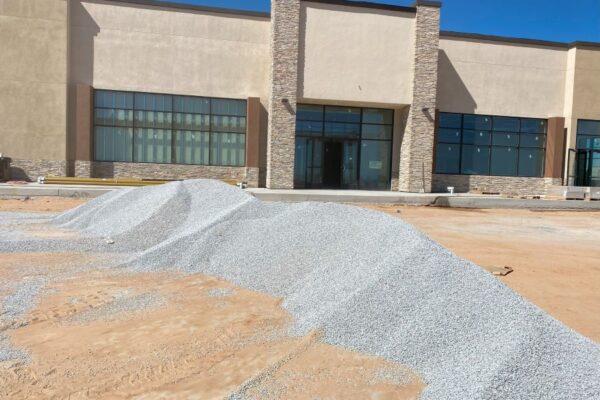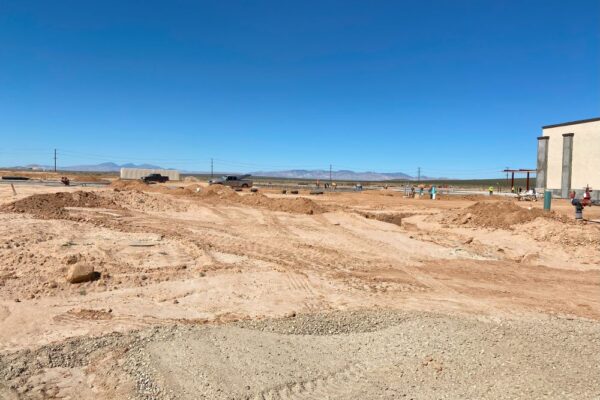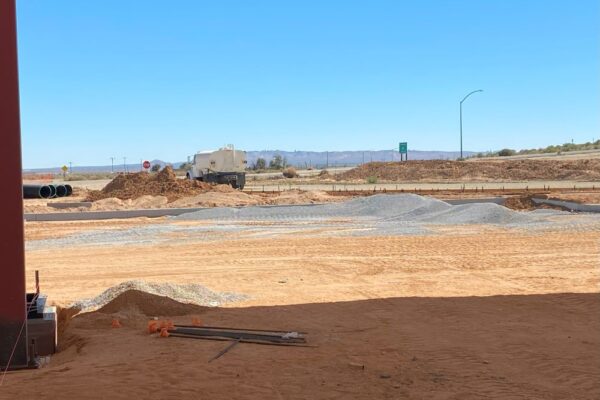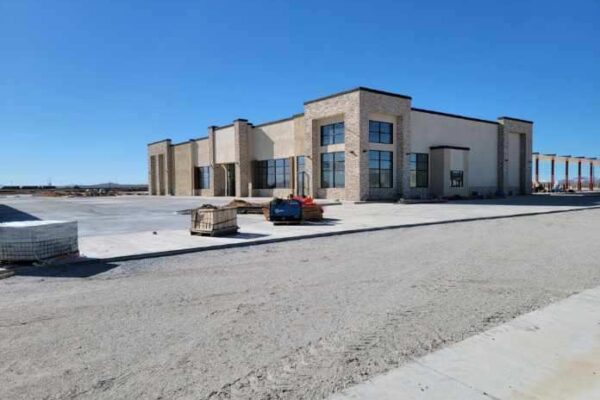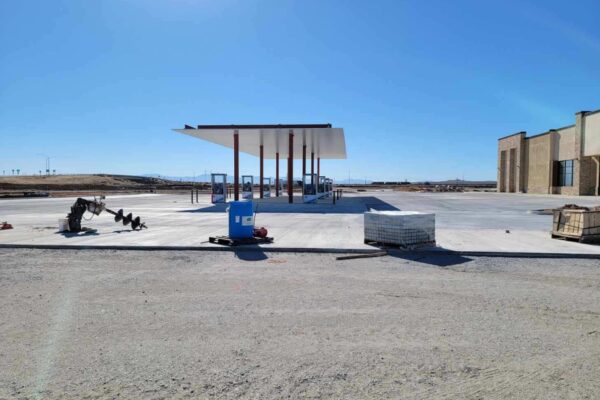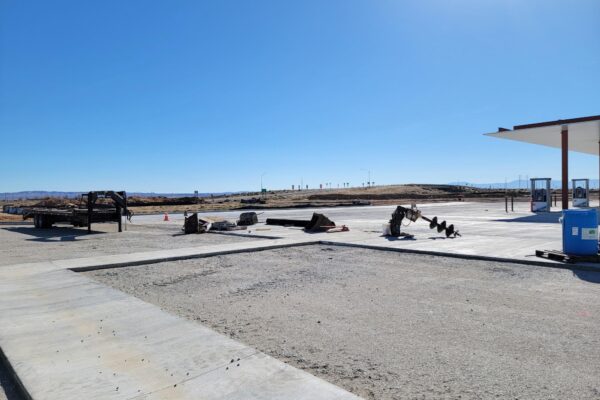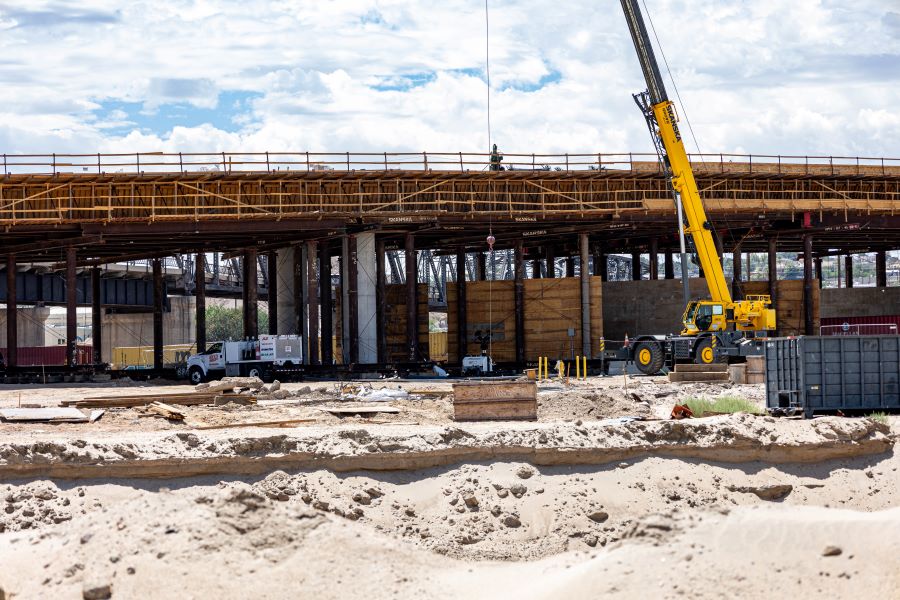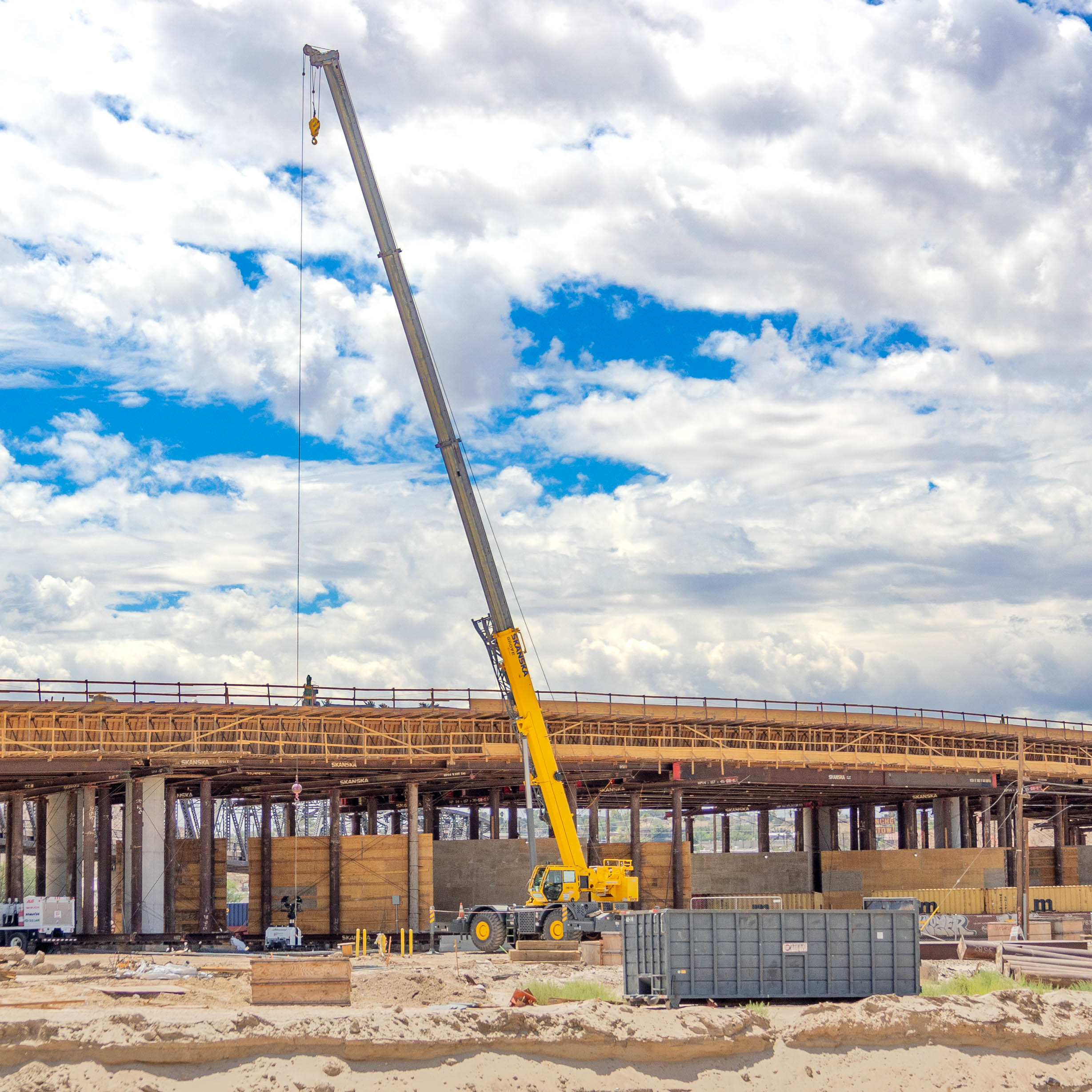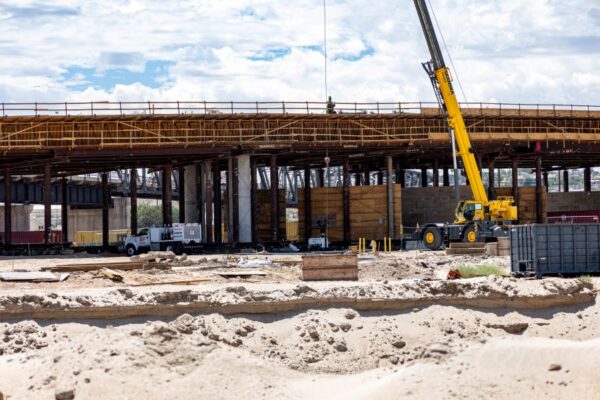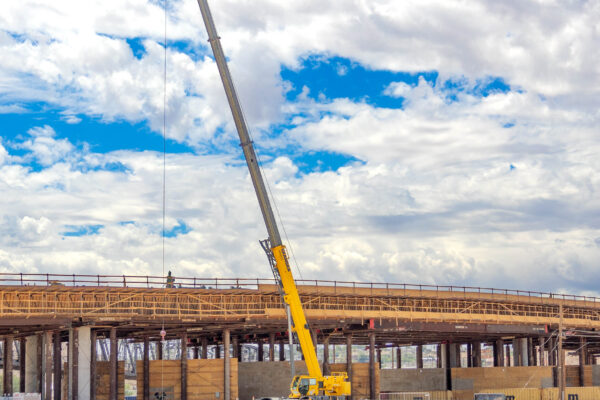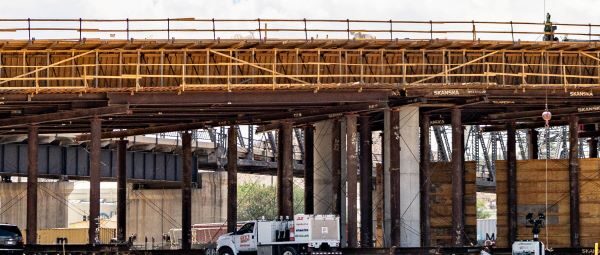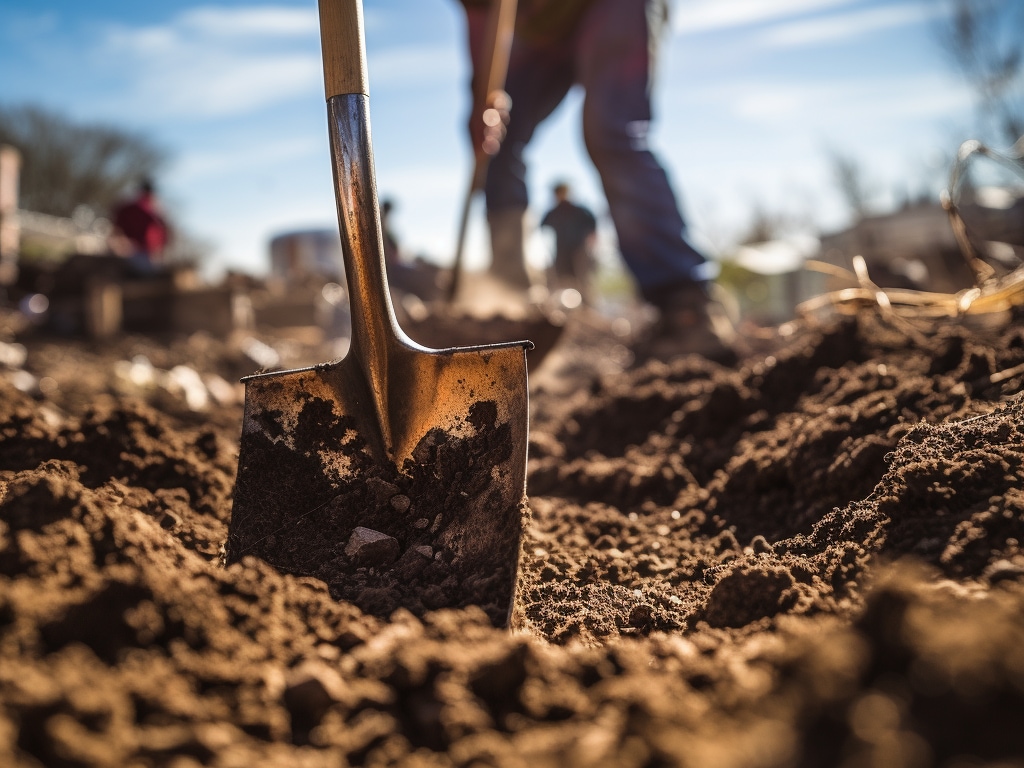
Understanding Fill Dirt and Fill Sand in Big Construction Projects
In construction and landscaping, the materials used can make or break a project. Two such materials, often confused but distinctly different, are fill dirt and fill sand. Each serves a particular purposes, especially in large construction projects.
What Is Fill Dirt?
Fill dirt is a naturally occurring earth material that lies beneath the nutrient-rich topsoil layer. It’s typically a blend of soil, clay, and small rocks or gravel. This composition gives fill dirt its key characteristic: stability. Unlike topsoil, it lacks organic matter, which can decompose over time and cause settling or instability.
Uses of Fill Dirt in Large Construction Projects
- Foundation Support: In construction projects, fill dirt is used to create a stable and level base for foundations. Its compact nature helps in preventing settling and shifting of structures.
- Land Shaping: Fill dirt is essential for altering the landscape. It’s used to fill holes, level out land, or construct embankments, making it ideal for shaping the land according to the project’s design.
- Infrastructure Projects: For roads, highways, and railway embankments, fill dirt provides a solid foundation. It supports these structures, ensuring longevity and safety.
- Flood Control: Fill dirt is also used in creating levees and berms for flood control, offering a natural barrier against water intrusion.
What Is Fill Sand?
Fill sand, on the other hand, primarily consists of sand particles. It’s known for its excellent drainage properties, a result of the space between sand particles which allows water to pass through easily. This makes fill sand less stable than fill dirt but good for situations where water drainage is a priority.
Uses of Fill Sand in Large Construction Projects
- Drainage Systems: Fill sand is commonly used in constructing drainage systems. It’s an integral part of septic systems, drainage fields, and for managing surface water runoff.
- Backfilling: In construction, fill sand is used for backfilling around foundations and other structures where water drainage is crucial. It prevents water accumulation that can lead to structural damage.
- Concrete and Asphalt Production: Sand is a key ingredient in concrete and asphalt, making it essential in almost all construction projects, especially in paving roads and constructing buildings.
- Landscaping: In landscaping, fill sand is used for areas that require good drainage, such as around plants that prefer drier soil conditions.
Fill Dirt vs. Fill Sand: Choosing the Right Material
When to Choose Fill Dirt
- Foundational Support: For projects requiring a solid foundation, such as building structures, bridges, or roadways, fill dirt is the ideal choice. Its composition, which usually includes a mix of soil, clay, and small rocks, provides a compact and stable base that minimizes settling. This ensures the longevity and safety of structures.
- Elevation Adjustments: In projects where altering the landscape’s elevation is necessary, such as in the construction of embankments or leveling ground for building, fill dirt is essential. It can be compacted to create a firm, elevated surface that maintains its shape over time.
- Weight-Bearing Projects: For areas that need to bear significant weight, such as parking lots or industrial sites, fill dirt offers the necessary stability. Its density and ability to be compacted make it capable of supporting heavy loads without significant compression or shifting.
- Resistance to Erosion: Fill dirt’s composition makes it less prone to erosion compared to fill sand. This is particularly important in areas where wind and water erosion can be a concern, such as near bodies of water or in open, windy areas.
When to Choose Fill Sand
- Drainage Requirements: In areas where water accumulation is a concern, such as around buildings’ foundations, in gardens, or in fields used for agriculture, fill sand is the preferred material. Its particle size and composition allow water to drain through quickly, reducing the risk of waterlogging and associated structural or crop damage.
- Prevention of Water Damage: In regions prone to heavy rains or flooding, fill sand can be used to create barriers or to fill in areas to prevent water from stagnating. This is crucial for protecting structures from water damage and for controlling soil erosion.
- Underlying Layer for Paving: Fill sand is often used as a base layer under pavers, concrete, or asphalt. Its ability to compact yet drain makes it an ideal substrate for these materials, providing a level surface that handles water effectively.
- Flexibility in Landscaping: Due to its excellent drainage properties, fill sand is a popular choice in landscaping projects, especially for plants that require well-drained soil conditions. It can also be used in creating water features, such as ponds or streams, where water movement and drainage are key.
Balancing Stability and Drainage
In some construction scenarios, a combination of both fill dirt and fill sand may be required. This is particularly true in projects where both stability and drainage are crucial. For example, a layer of fill dirt can be used for creating a stable base, topped with a layer of fill sand to facilitate drainage. This combination approach can offer the benefits of both materials while mitigating their individual limitations.
Want to know more about your rock quarry options in Southern California?
Call Lynx Cat Mountain Quarry for a free quote or to find out more about our products.
Call us today and talk to a real person
about your construction aggregate needs.

Riprap, for the uninitiated, is more than just a catchy term. It’s the first defence in the battle against the relentless forces of water that sculpt and erode riverbanks. These large, rugged stones, sourced from rock quarries, are strategically placed along riverbanks to armor them against erosion.
The science behind riprap is as solid as the rocks themselves. Erosion control isn’t just about piling up stones randomly. There’s an art, or perhaps a science, to choosing the right rocks.
Size matters, as does shape. Too small, and the rocks might dislodge. Too round, and they might roll away like marbles. Ideal riprap in riverbank erosion control is angular, large, and has the right density to defy the river’s attempts at relocation. Here are a few questions we get about riprap for riverbank erosion control:
What is riprap, and how does it help in controlling riverbank erosion?
Answer: Riprap is a form of erosion control made up of large stones or chunks of concrete placed along shorelines, riverbanks, and other areas susceptible to erosion. The primary purpose of riprap is to absorb and deflect the energy of flowing water or wave action, which reduces the erosion of the soil underneath. The interlocking nature of the stones provides stability to the structure and creates a barrier against erosion.
2. Are there specific types of rocks that are best suited for riprap?
Answer: Yes, the most effective rocks for riprap are typically large, angular, and durable—like granite. Angular rocks interlock more effectively than round ones, providing better stability. Durability is also crucial—rocks should be resistant to weathering and erosion.
3. Can riprap have negative environmental impacts?
Answer: While riprap is effective for erosion control, it can have some negative environmental impacts if not properly designed and installed. For instance, it can alter natural habitats, affecting local flora and fauna. The installation process might disrupt existing ecosystems. To mitigate these impacts, it’s important to carefully plan riprap projects, sometimes incorporating bioengineering methods like planting vegetation among the rocks to create a more natural, eco-friendly structure.
4. How is riprap designed and installed to ensure effectiveness?
Answer: The design and installation of riprap require careful consideration of several factors, including the size and angle of the slope, the velocity of water flow, and the anticipated level of erosion. Engineers typically conduct a thorough analysis of the site to determine the appropriate size and type of rocks. The rocks must be large enough to resist being washed away but not so large as to be unmanageable. Proper installation often involves laying a filter fabric underneath the rocks to prevent soil from washing out and ensuring that the rocks are well-packed and interlocked to form a stable, long-lasting barrier.
The engineering aspect of riprap placement is a meticulous process. It’s like a game of Tetris played with nature, where each stone must fit perfectly to ensure the stability of the whole structure.
Riprap in Southern California
Across Southern California, there are success stories of riverbanks that have been stabilized thanks to quarry-sourced riprap. Each project is a testament to the blend of natural materials and human ingenuity. In these cases, riprap has not only prevented erosion but also created habitats for local wildlife.
Rock quarries in Southern California play a crucial role in river management. Riprap is a perfect example of how we can harness natural resources responsibly to protect and enhance our environment.
So, the next time you pass by a river, admiring its peaceful flow, remember the unseen heroes – the rocks and the quarry that sourced them – standing guard against the forces of nature.
Find Riprap for Riverbank Erosion Control in California
Join Lynx Cat Mountain Quarry in our commitment to protect and preserve Southern California’s riverbanks. Our granite riprap is not just stone; it’s the frontline defense against river erosion.
Whether you’re an engineer, a landscaper, or a city planner, let’s collaborate to keep our rivers stable, safe, and serene. Contact us today to learn more about how our granite can fortify your erosion control projects.
Call us today and talk to a real person
about your construction aggregate needs.

Have you ever stumbled upon a construction site and noticed those large, rugged stones neatly piled up, seemingly defying the chaos that usually reigns in such areas? Well, chances are, you’ve had a rendezvous with rip rap. No, it’s not a new genre of music, but something quite rock-solid – both literally and metaphorically! Let’s dive into the world of commercial rip rap in Southern California and unearth some gritty details.
What on Earth is Rip Rap?
Commercial rip rap, in its most basic form, is a collection of large stones or chunks of concrete used to prevent erosion by water. Think of it as the bouncer of the shoreline or the guardian of the slope, keeping soil and rock from getting carried away by the whims of water or wind. Rip rap comes in various sizes, from fist-sized to as big as a compact car – okay, maybe not that huge, but you get the picture.
The Science Behind the Stones
The beauty of rip rap lies not just in its brawn but also in its brain, metaphorically speaking. Scientifically, these stones are marvels at dissipating the energy of flowing water, thereby reducing the erosion power of currents and waves. Their irregular shapes and varying sizes create a jigsaw puzzle that water finds quite tricky to maneuver, slowing its roll – literally.
Commercial Rip Rap’s Role in Southern California
In Southern California, where the sun is as relentless as the occasional rainstorms, rip rap plays a vital role in maintaining landscapes and infrastructure. From stabilizing the slopes along the Pacific Coast Highway to guarding the banks of the Los Angeles River, commercial rip rap is a silent yet sturdy hero.
Types of Rip Rap
Not all rip rap is created equal. In Southern California, you’ll find a variety of materials used, including granite, limestone, and even recycled concrete. Each type has its unique characteristics and suitability depending on the project.
Where to Source Commercial Rip Rap
Now, if you’re thinking, “This sounds great, but where do I get my hands on some commercial rip rap in Southern California?” – fret not. There are numerous quarries and suppliers scattered across the region. From the rugged terrains near the San Gabriel Mountains to the desert outskirts of San Bernardino, these quarries extract and process a range of rip rap to suit various needs. The trusted source of rip rap in Southern California is Lynx Cat Mountain Quarry.
The Buying Guide
When shopping for rip rap, consider the size and type of material needed for your project. Suppliers usually categorize rip rap by size, ranging from Class 1 (small) to Class 5 (large). Also, think about the specific application – is it for shoreline protection, slope stabilization, or aesthetic purposes?
Installation Insights
Installing rip rap isn’t a do-it-yourself kind of Saturday project. It requires skill and machinery. Typically, a layer of geotextile fabric is laid down first to prevent soil from moving through the stones. Then, the rip rap is carefully placed to ensure maximum stability and effectiveness.
The Quirky Side of Commercial Rip Rap
Did you know that rip rap has a secret life beyond its erosion-fighting day job? In some parts of Southern California, it has been used in landscaping, creating rugged, natural-looking boundaries that would make any rock enthusiast’s heart skip a beat!
Commercial rip rap in Southern California is more than just a pile of stones. It’s a sophisticated, scientifically-sound solution to a natural problem, provided by nature itself. Whether you’re a contractor looking to shore up a hillside or a homeowner wanting to prevent your backyard from wandering into the neighbor’s pool, rip rap is your go-to guy. So next time you pass by a construction site or a newly protected shoreline, give a little nod to those hefty heroes holding the earth in place.
Ready to tackle erosion with top-quality rip rap? Call Lynx Cat Mountain Quarry in California for the best in durability and variety. Protect your landscape today!
Call us today and talk to a real person
about your construction aggregate needs.
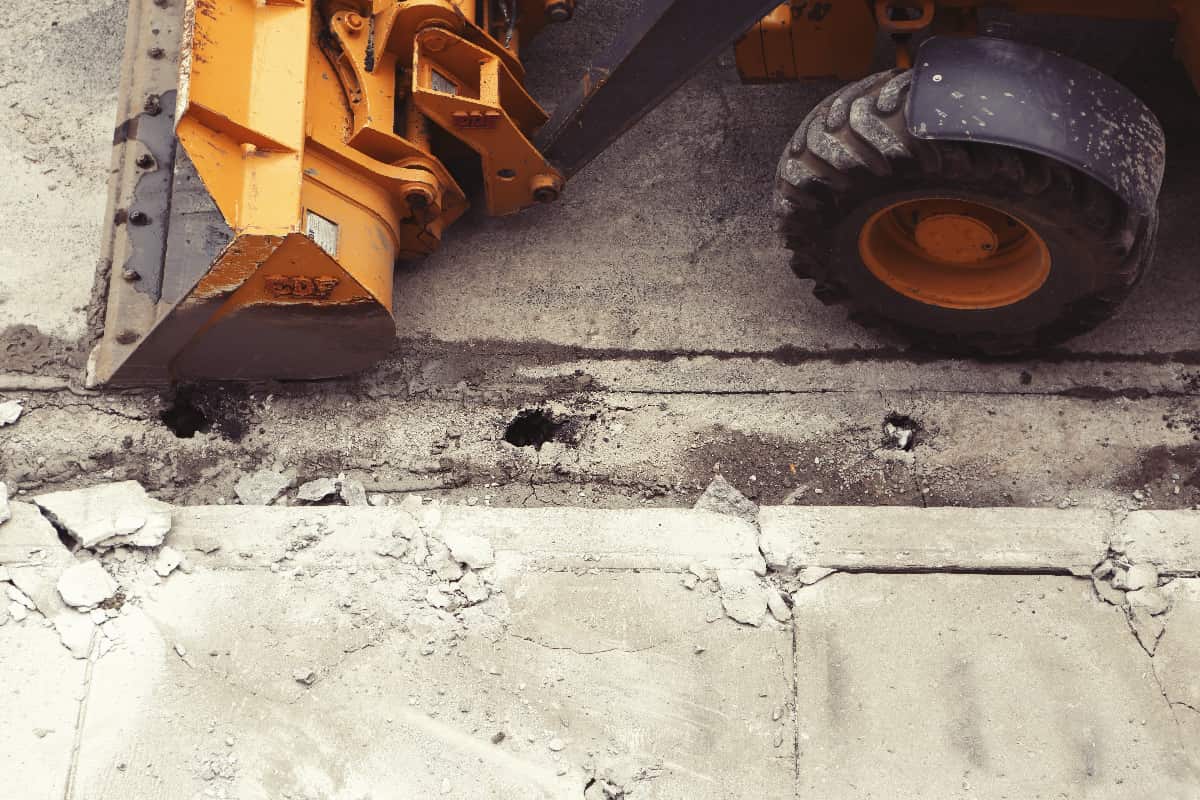
In the sun-drenched expanses of Southern California, where every road tells a story and every journey begins with a single step, there lies a secret ingredient to our well-traveled paths—granite.
Granite: The Unsung Hero of the Road
Granite is strong, reliable, and ever-present. It’s the foundation of our roads, the sturdy platform upon which our daily lives roll out. The road base material suppliers in this region don’t just provide a product; they offer stability, durability, and unwavering support.
Granite is the ideal candidate for road bases. Why? Because it understands the importance of bearing the weight of our world, without crumbling under the pressure of ceaseless traffic over long periods of time.
From Quarry to Commute
The journey from a rugged quarry to a smooth road is a story of transformation. Our road base material suppliers help tell the story. It starts with the raw, unyielding granite, crushing it, refining it, until it’s ready to lay the groundwork for our travels.
Every grain of granite is a testament to a commitment to quality. It’s not just about size or texture; it’s about creating a road base that balances strength with flexibility, ensuring our roads can endure.
Why Granite?
Choosing granite for your road project in Southern California isn’t just a practical decision; it’s a choice that makes sense on all side. It’s opting for:
- Endurance: Like the enduring spirit of a well-told story, granite offers a longevity that outlives its counterparts.
- Resilience: Granite stands resilient, much like the human spirit, in the face of heavy burdens and the passage of time.
- Economy: While granite may seem a humble choice, its durability makes it a cost-effective protagonist in the long run.
Road Base Material Suppliers Choose the Strength of Granite
In the world of road construction, the narrative is clear – strength matters. Granite, in its unyielding nature, is the epitome of strength. It bears the burden of our heaviest vehicles with the grace of a ballet dancer, resilient and strong. It laughs in the face of heavy traffic and scoffs at the threats of weather, making it the ideal protagonist for any road story.
A granite quarry is not just a source of material; it’s a wellspring of reliability. Every piece of granite that leaves the quarry carries with it a promise – a promise of a road that will endure, a path that will last. This is the kind of promise that weaves through generations, a legacy written in stone.
Granite’s Cost-Effective
In the fiscal narrative of road construction, granite brings a twist – it’s surprisingly cost-effective. Yes, it’s an investment, but like the best investments, it pays dividends in longevity and reduced maintenance costs. In the long run, granite is the penny-wise choice for the budget-savvy builder.
The Path Forward
As you stand at the crossroads of your next road construction endeavor in Southern California, let the road base material suppliers offering granite guide your way. This choice is more than a transaction; it’s an investment in the paths we choose to travel, the roads we pave for future generations.
Ready to revolutionize your road construction projects with the unmatched strength and durability of granite? Look no further than Lynx Cat Mountain Quarry in Barstow, California, your premier road base material suppliers. Our granite is more than just a foundation; it’s the bedrock of longevity, resilience, and cost-effectiveness.
Join the ranks of satisfied builders and developers who have discovered the Lynx Cat Mountain difference. Contact us today and take the first step towards constructing roads that define strength, durability, and elegance. Lynx Cat Mountain Quarry in Barstow, California – where your road to success begins with our granite.
Call us today and talk to a real person
about your construction aggregate needs.
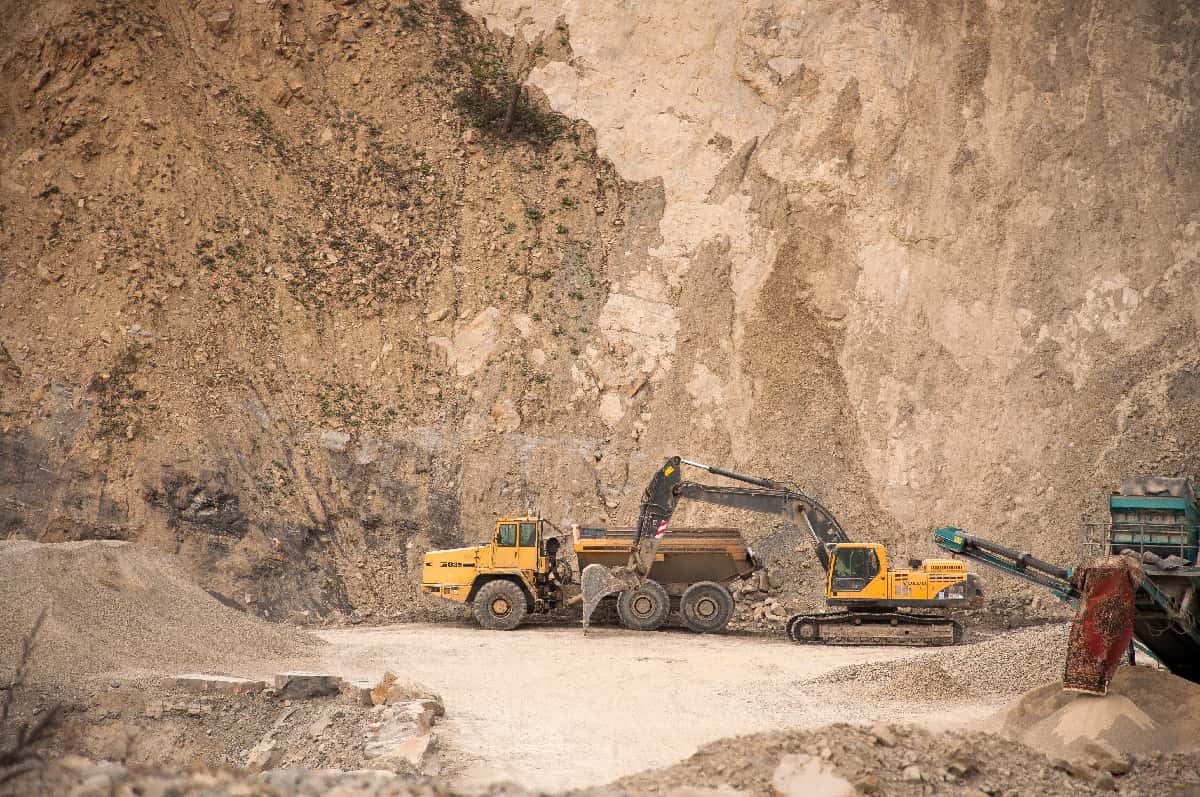
In the wide landscape of Southern California, where the sun kisses the earth and the mountains stand proud, lies a treasure hidden of granite. This isn’t just any stone; it’s the foundation of our construction.
The Quarry as Commercial Stone Supplier
Imagine a place where nature’s artistry meets human endeavor—this is the granite quarry. Vast expanses of rock are carefully sculpted, day after day, to yield slabs of immense strength and beauty. These quarries aren’t just pits in the ground; they are the cradles of materials that build our homes, our offices, and our landmarks.
In Southern California, granite quarries are more than just mining sites; they are the birthplaces of the infrastructure.
Why Granite?
Granite, in its essence, is a tapestry woven by the earth over eons. Composed of feldspar, quartz, and mica, it speaks a language of durability and elegance. It’s a material that withstands the test of time, both in strength and in style.
Used in everything from countertops to freeways, granite’s versatility is unmatched. Its resistance to weathering and abrasion makes it a favorite for exterior applications, while its natural beauty adds a touch of sophistication to interiors.
The need for commercial stone suppliers touches many lives, each in a unique way. Aside from the big construction companies that often look to a rock quarry, let’s explore who else might need them:
- Architects and Designers: Architects and designers build our environment. They turn visions into blueprints, and for this, they need the finest materials. Commercial stone suppliers provide them with the variety and quality of stone needed to bring their artistic visions to life, whether it’s for a majestic skyscraper or an intimate patio.
- Construction Companies and Contractors: The backbone of any construction project, these professionals are constantly in pursuit of durable, high-quality materials. Commercial stone suppliers offer them a range of options for different needs, from foundational materials to decorative touches.
- Landscapers and Garden Designers: For those who sculpt outdoor spaces, stone is a medium of choice. Whether it’s for creating serene garden paths, robust retaining walls, or elegant water features, landscapers rely on commercial stone suppliers for materials that blend aesthetics with resilience.
- Municipal and Government Agencies: Public projects, such as parks, government buildings, and public infrastructures, require large quantities of stone. A commercial stone supplier is crucial for these projects, providing materials that meet the stringent requirements for safety, durability, and public use.
- Property Developers: In the realm of property development, where every detail can add to the value and appeal of a project, the right stone can make all the difference. Developers turn to commercial stone suppliers for materials that will give their projects a competitive edge in the market.
- Homebuilders and Homeowners: Whether it’s for building a new home or renovating an existing one, homebuilders and homeowners often seek out the expertise of a stone supplier. From granite countertops to marble flooring, the right stone can elevate the aesthetic of any home.
- Restoration and Preservation Experts: For those dedicated to restoring and preserving historical buildings and monuments, finding the right stone is crucial. Commercial stone suppliers play a vital role in providing materials that match the historical context and integrity of these structures.
Sustainability: Carving a Future
Today, sustainability is not just a choice; it’s a necessity. Commercial stone suppliers in Southern California are increasingly adopting practices that are respectful of the environment. Responsible quarrying, water recycling, and minimizing carbon footprints are part of their lexicon. When you choose granite from these suppliers, you’re not just choosing a stone; you’re choosing a future.
Need a Commercial Stone Supplier in Southern California?
The granite quarries of Southern California like Lynx Cat Mountain Quarry are more than just sources of stone; they are the keepers of quality, the guardians of sustainability.
As you embark on your next project, consider calling Lynx Cat for a free quote: 760-760-5969.
Call us today and talk to a real person
about your construction aggregate needs.
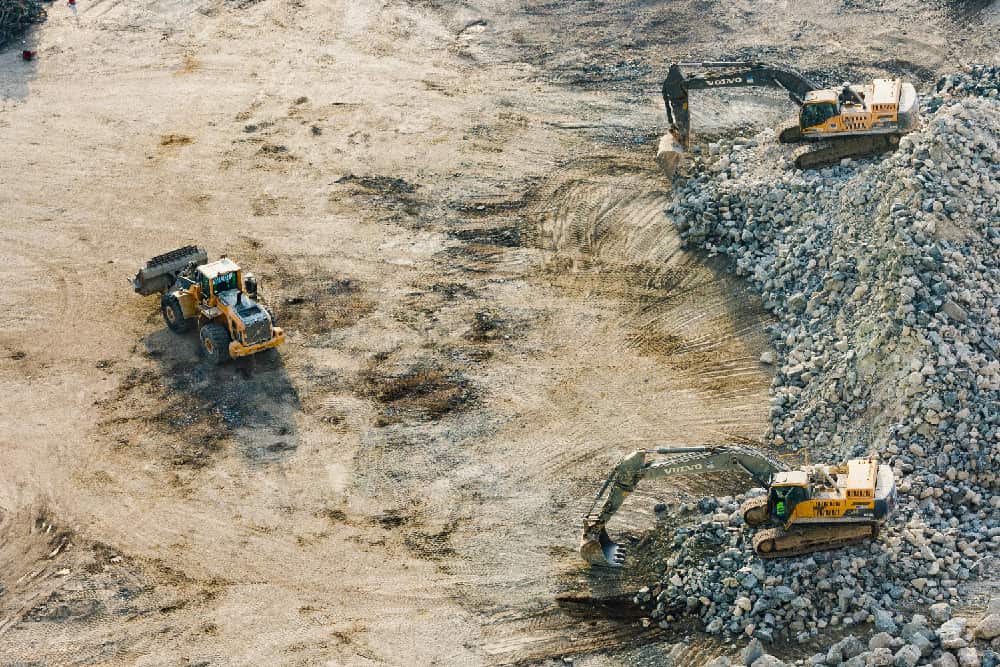
In the world of construction and civil engineering, the California Bearing Ratio (CBR) test tells us the strength and bearing capacity of the ground beneath our feet—or more accurately, beneath our roads and structures. This test is not just a technical procedure; it guides engineers in their quest to build sturdy and enduring infrastructures.
Now, let’s dive into what this CBR test is.
Imagine you’re baking a cake—you’d want to know how well the ingredients will hold together. Similarly, the CBR test measures how well the ground can bear the weight of roads or buildings. It’s done by comparing the pressure required to penetrate soil or aggregate (like granite rock) with the pressure required to penetrate a standard material. The result is expressed as a percentage—a little number with enormous implications.
CBR Test: What Happens?
Here’s how it’s done:
- Preparation of Test Samples: The first step involves preparing the soil or aggregate samples. These samples are carefully adjusted to reach the desired moisture content. For granular materials, like granite, the process involves compacting the sample to a specific density, ensuring uniformity and readiness for the test.
- Placement in CBR Molds: The prepared samples are placed in CBR molds. These molds are cylindrical waiting to reveal the material’s strength. The samples are compacted in these molds, layer by layer, each layer receiving a set number of blows from a standard weight.
- Soaking (When Required): Some tests require the samples to be soaked, an immersion allowing the water to seep in and interact with the material. This soaking simulates wet weather conditions, adding another layer of understanding to our test.
- Penetration Test: A penetration piston, with a cross-sectional area of 3 square inches, is pressed into the sample at a steady rate. This is the moment of truth, where the strength of the material is challenged. The depth of penetration is measured under various loads.
- Calculation of CBR Value: The resistance of the sample to penetration is compared to the resistance of a standard material. The CBR value is calculated as the ratio of the two, expressed in percentage. It tells a story of strength, of resilience—how well the material will perform under the weight of our ambitions.
- Interpretation of Results: This is where science blends with art. Interpreting the CBR values tells us about the suitability of the material for different construction scenarios, guiding engineers and architects in their creative and technical endeavors.
Why CBR Matters for Construction
Why is this important when buying granite rock for big construction projects?
First, granite is known for its strength and durability. It’s like the steadfast friend who’s always there, unyielding and reliable. However, even the mightiest of rocks need to be vetted for their suitability in construction. This is where CBR comes in, standing as a judge, assessing whether the granite has the muscle to support the structures we intend to build on it.
In construction, particularly for foundations, roads, and pavements, the CBR value is a critical factor. It tells us if the granite rock can withstand the traffic loads or the weight of the buildings. A high CBR value indicates that the rock is less likely to settle or deform under pressure—a trait we deeply admire in construction materials.
Moreover, in the complex dance of construction, cost and quality have to work together. The CBR value can influence the design of the project. Higher CBR values can lead to thinner pavement layers, which means less material and lower costs.
The CBR Roadmap
For engineers and project managers, understanding the CBR value is like having a roadmap. It helps in making informed decisions about material selection, project design, and even budget allocation. Essentially, it’s about building not just for today, but for a future where our structures stand tall and proud, weathering the tests of time and nature.
So, when considering granite rock for your next big project, remember the humble yet mighty CBR test. It’s not just about picking a strong rock; it’s about ensuring that this strength aligns with the demands of your ambitious construction dreams. In this intricate ballet of building, the CBR test is your choreographer, ensuring that every step, every leap, is taken with assurance and grace.
Looking for a Strong Foundation?
Are you planning your next big construction project? Do you seek the assurance that your chosen material, especially granite rock, will stand the test of time and load? Look no further than Lynx Cat Mountain Quarry—Barstow’s very own top rock quarry.
At our quarry, we don’t just supply rock; we provide a foundation. Our granite rock is not just any material; it’s a symbol of strength, resilience, and reliability. Tested and proven through rigorous CBR tests, our granite assures you of its ability to withstand the pressures of your most ambitious projects.
Call us today for a free quote: 760-760-5969.
Call us today and talk to a real person
about your construction aggregate needs.
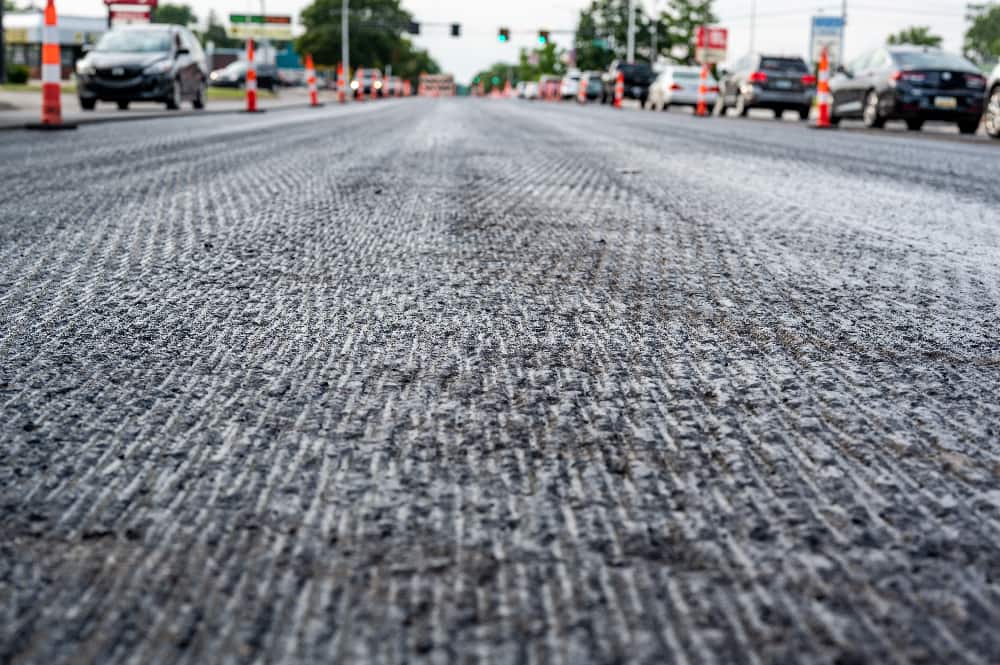
If you’re searching for the unsung hero of roadways, look no further than the granular subbase (GSB). It’s the bedrock of good roads. So, let’s dive into the world of Granular Subbase in Southern California, where the stones tell the story.
The Backbone of Pavement: Granular Subbase in Southern California
In the Golden State, the ground beneath us is more than just dirt—it’s a finely tuned, engineered marvel, thanks to GSB. Now, GSB might not get the glory of many construction stories, but this supporting actor plays a pivotal role in everyone’s daily commute.
Imagine Granular Subbase as the guy behind the guy. Not the hero everyone sees, but without it, the main hero—be it asphalt or concrete—would quite literally crumble under pressure. And when it comes to Granular Subbase in Southern California, we’re talking about a mixture as eclectic and diverse as the state itself, typically made from crushed stone, gravel, and sand.
What Is Granular Subbase?
Granular Subbase (GSB) comprises a range of crushed stone materials that typically include a mixture of different-sized particles for compaction and stability. The composition of a GSB layer can vary depending on the requirements of the construction project and local standards, but here are the general components:
- Coarse Aggregates: These are the larger stones in the mix, usually ranging in size from 20 mm to 75 mm. They offer the primary structural support for the GSB layer due to their size and strength. They are the primary load-bearing component.
- Fine Aggregates: These smaller particles fill the voids between the coarse aggregates and help to create a dense and cohesive structure. Fine aggregates are usually sand or crushed stone that pass through a 4.75 mm sieve.
- Filler Materials: These are very fine particles, such as stone dust, that fill the smallest gaps in the subbase. They help to bind the coarse and fine aggregates together, which increases the stability of the GSB.
- Moisture: Water is an essential component as it helps to bind the aggregates together when compacted. The right moisture content is crucial for achieving maximum density and strength.
The exact composition of a GSB can be designed to meet specific technical specifications, including gradation, Atterberg limits (which measure the plasticity of the material), and California Bearing Ratio (CBR) values, among other criteria. The layer’s ability to distribute loads, reduce waterlogging, and provide a stable base for road surfaces makes it an integral part of roadway and pavement construction.
In regions like Southern California, granite is often a significant component of the granular subbase. This rock type is crushed and screened to meet the granular subbase specifications, ensuring the base material is suitable for the intended application in road construction and other infrastructure projects.
Why Is Granite Ideal for GSB?
Granite sets the stage for the most robust roads. Why? Its natural hardness and ability to compact tightly make it the best option in the Granular Subbase world.
Don’t Just Take Our Word for It:
- Strength in Numbers: Studies have shown that a well-laid GSB can extend the lifespan of a road by up to 30%. That’s the difference between a one-hit-wonder and an evergreen classic track.
- Economic: California saves millions annually by investing in high-quality subbases like GSB. That’s money that can be rerouted into the community.
Here’s some of what GSB is best used for:
- Roadways and Pathways: GSB isn’t always visible, but it’s what every good road stands on.
- Parking Lots and Driveways: GSB lays the groundwork where our cars rest.
- Foundations for Buildings: It’s not just for pathways; GSB is the opening act for strong building foundations.
- Landscaping: Who says practical can’t be beautiful? GSB also plays a role in sculpting the land to your design whims.
When the Ground Matters
Because much like the difference between a fast-food burger and a steak at a five-star joint, the difference between any old subbase and a granite-laden GSB is the difference between a road that’s pothole-central and a smooth ride home.
So, whether you’re a civil engineer, a contractor, or just someone who appreciates the finer things beneath your feet, remember this: granular subbase is the bedrock of a surprising amount of our society—crafted from the Earth, serving the people.
Ready to lay the groundwork for excellence with the Granular Subbase that stands the test of time? If you’re in Southern California and want to build on a solid foundation, call us at Lynx Cat Mountain Quarry today. Our rock quarry near Barstow, California, has a range of construction and private products. Call today.
Call us today and talk to a real person
about your construction aggregate needs.
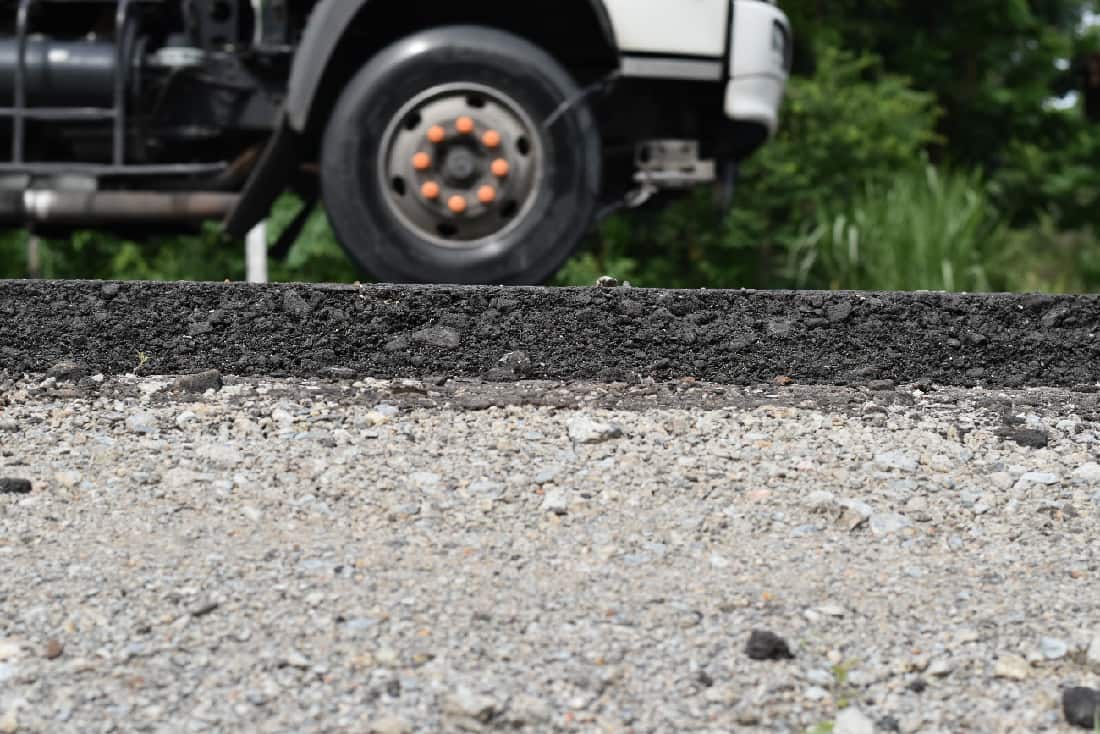
Today we are going to get into the impressive qualities of 1-inch minus CAB.
For those unfamiliar, the term 1-inch minus CAB might sound like modern jargon, but it’s far from a trend. It’s a substantial material that makes an impact across industries, particularly in construction and landscaping. This is because 1-inch minus CAB is fundamental to creating stable, durable ground surfaces — a key ingredient for successful building projects.
Benefits of 1-inch Minus CAB in Southern California
Before we dive headfirst into the world of crushed aggregate base (CAB), let’s tackle some statistics that might surprise you. Did you know that in California, the use of proper road base materials like 1-inch minus CAB can reduce road maintenance costs by up to 50%? Or that the right foundation materials are crucial to preventing the state’s 396,540 miles of roadways from crumbling like a cookie?
Now, 1-inch minus is a term for crushed rock that measures up to an inch or smaller, which includes fines that help the rocks to compact and stay together, like a good family.
Here’s a list of why 1-inch minus CAB is so sought after for construction projects:
- Stability: It provides a stable base for roads, driveways, and parking lots, which is pretty important unless you like driving on a surface that resembles a trampoline.
- Drainage: It allows for excellent drainage. Because nobody likes a road that turns into a swimming pool every time it rains.
- Cost-Effective: It’s cost-effective, which is music to the ears of anyone who pays taxes or just hates spending money.
- Durability: It offers superior durability. A road that lasts is a road built on good CAB.
Granite for 1-inch Minus CAB
Now, why is granite the right choice for crushed aggregate base? Because it’s hard, durable, and, it works. Granite’s like the rock star that doesn’t fade away, ensuring that 1-inch minus CAB stays in top shape despite the heavy traffic and the scorching heat that can cook an egg on the sidewalk.
This rock isn’t just tough; it’s ready to support the weight of Southern California’s traffic, which, considering the number of cars out there, is no small feat.
Best Uses:
- Creating level and sturdy surfaces for construction projects
- Serving as a base for asphalt pavements
- Landscape design, for those want a backyard that will last
- And providing erosion control, because nobody likes their land slipping away
In essence, 1-inch minus CAB in Southern California isn’t just a material; it’s the go-to in the world of construction, holding up our daily lives quite literally from the ground up.
How Is It Made?
Here’s a simplified outline of how it is typically created:
- Sourcing Raw Material: The process begins with the extraction of raw stones from a quarry. For 1-inch minus CAB, the desired raw material is usually granite due to its durability and strength.
- Crushing: The extracted granite boulders are broken down into smaller pieces. This is done using large industrial crushers that apply mechanical pressure to break the rocks into smaller, more manageable fragments.
- Screening and Grading: After crushing, the material is passed through vibrating screens that separate it into different size grades. The term “1-inch minus” refers to the size of the crushed stones, meaning that the material passes through a screen with one-inch square openings, but not through a smaller screen, ensuring that the largest diameter of any stone in the mix does not exceed one inch.
- Washing (Optional): Depending on the end-use and required specifications, the aggregate may be washed to remove any remaining dust, dirt, or unwanted particles that could affect the quality and consistency of the CAB.
- Stockpiling: The finished 1-inch minus CAB is then stockpiled, waiting to be transported to construction sites where it will be used as a stable base for projects ranging from roadways to foundations for buildings.
Where to Buy 1-Inch Minus CAB in Southern CA?
You might be asking yourself, “Where can get 1-inch minus CAB?” Well, fear not, Lynx Cat Mountain Quarry is your one-stop rock shop. Our rock quarry is located just outside Barstow, CA, we are conveniently located to serve all over Southern California.
Contact Lynx Cat Mountain Quarry today for a quote: 760-760-5969.

